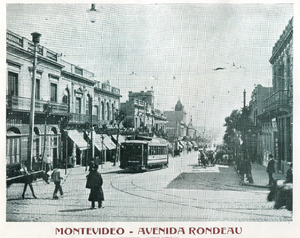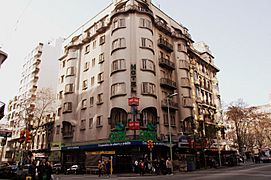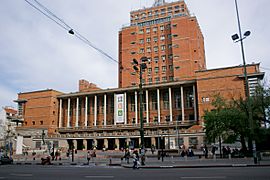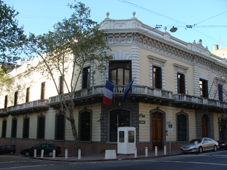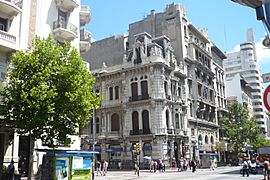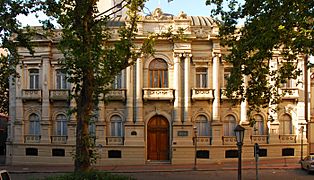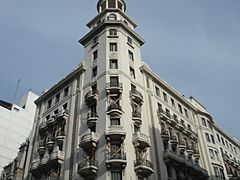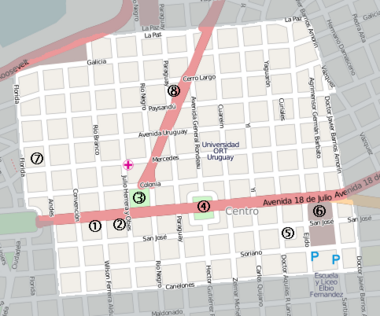Centro, Montevideo facts for kids
Quick facts for kids
Centro
|
|
|---|---|
|
Barrio
|
|

The Edificio Rex and the El Entrevero fountain in Plaza Fabini
|
|
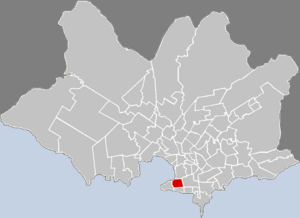
Location of Centro in Montevideo
|
|
| Country | |
| Department | Montevideo Department |
| City | Montevideo |
Centro is a lively neighborhood, or barrio, in Montevideo, Uruguay. It's like the heart of the city! The main street here is 18 de Julio Avenue. This area is the city's main business district. It stretches between Plaza Independencia and Ejido Street.
Centro was the first neighborhood built outside the old city walls. That happened in the early 1800s. Today, it's one of the busiest and most exciting parts of Montevideo. You'll find many offices, shops, and fun places here. It's also famous for its beautiful old European-style buildings.
Contents
Exploring Centro's Past
For many years, people couldn't build outside Montevideo's city walls. This was because of the city's military past. The area outside the walls was called "Campo de Marte" or "Ejido." But in 1829, a new law changed everything! The government decided to tear down the city walls.
After the walls came down, Montevideo became an open city. This meant it could grow beyond the old part, known as Ciudad Vieja. This new area was called Ciudad Nueva (New City). Plans included a new city square. By 1840, this square was named Plaza Cagancha. However, the Uruguayan Civil War slowed down building in this new area.
Discovering Centro's Landmarks
The most important sights in Centro are found along 18 de Julio Avenue. There are two main city squares to explore:
- Plaza Fabini: This square is also known as Plaza del Entrevero.
- Plaza de Cagancha: Another important square in the neighborhood.
Centro is amazing because it has so many different building styles. Most of them are European, showing the influence of immigrants.
- Art Deco Style: You can see this in buildings like the Salvo, Rinaldi, and Díaz palaces. Art Deco uses cool geometric shapes and patterns.
- Eclectic Style: This style mixes different ideas from the past. Examples include the Palacio Piria, which is home to the Supreme Court. Also, the Buxareo House, where the French embassy is, and the Ateneo de Montevideo.
This neighborhood also has many important government buildings:
- Executive Tower: This is where the President of Uruguay works.
- Palacio Santos: Home to the Ministry of Foreign Relations.
- Montevideo City Hall: The main city government building.
- Supreme Court: Where important legal decisions are made.
- ANCAP Headquarters: The main office for Uruguay's state-owned oil company.
Gallery of Centro's Sights
Places of Worship in Centro
Centro is home to many different places where people come to worship.
- St. Michael Garicoits Church: This is a Roman Catholic church, often called "Iglesia de los Vascos."
- Church of St. Joseph and St. Maximilian Kolbe: Another Roman Catholic church, also known as "Conventuales."
- Central Methodist Church: A Methodist church.
- Uruguayan Jewish Community: A synagogue.
- New Jewish Congregation: A Conservative synagogue.
- Vaad Ha'ir: Another synagogue.
- Uruguay Islamic Center: A Muslim place of worship.
Map and Main Attractions
|
See also
 In Spanish: Centro (Montevideo) para niños
In Spanish: Centro (Montevideo) para niños
- Barrios of Montevideo


